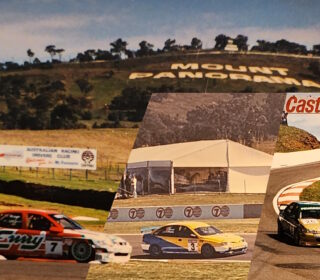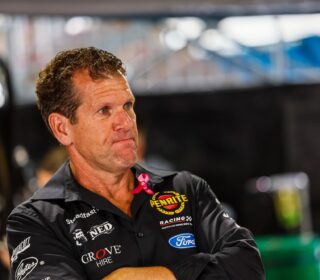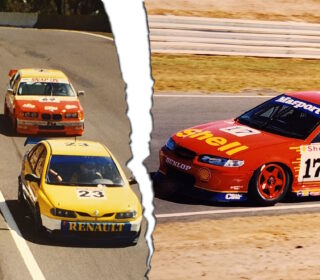Survivors, Innovators & Legends
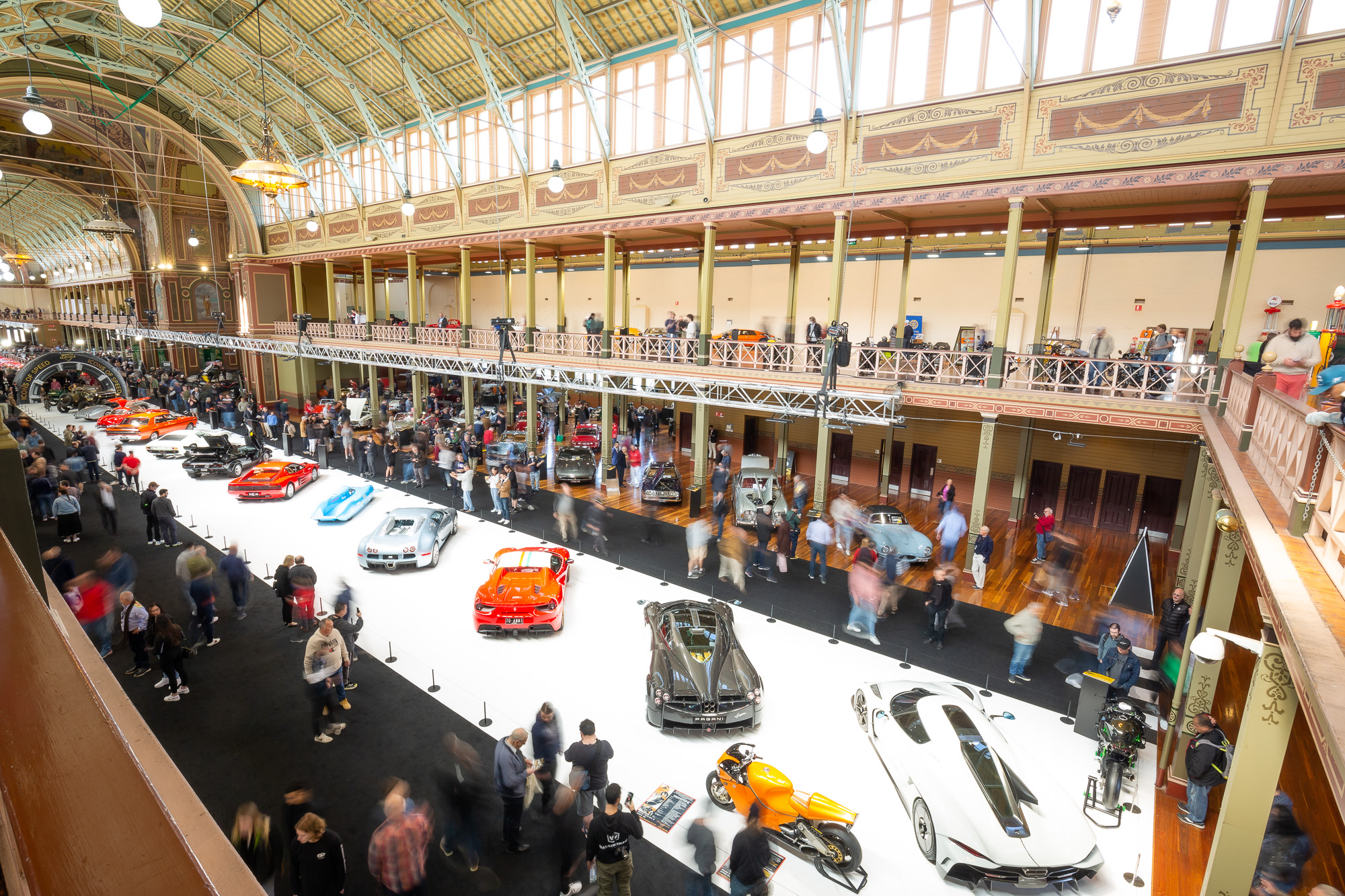
After a couple of years parked up during the pandemic, Motorclassica roared back onto the scene over the Bathurst weekend in Melbourne, with the festival re-emerging with a new flavour, offering something for everyone with an automotive interest.
While the event has grown a cult following for its annual collection of the classics, recent moves have seen the assembly opened up to include more recent uber-desirable hypercars.
Think the 2023 Koenigsegg Jesko Absolut, a 2021 Mercedes Benz AMG GT Black Series “Project 1” Edition, plus a McLaren P1, amongst others, while at the other end of the scale, showpieces included a 1902 Thomas Model 17 Detachable Rear Entry Tourer, a 1904 Napier L48 Samson, a 1909 Schacht Model K Buggy, a 1909 Sizaire et Naudin two-seater roadster, and more.
Like other editions dating back over the past decade, Motorclassica continued to showcase some standout pieces with competition heritage.
Each and every display item had its own fascinating tale to tell, here is a collection of those yarns…
Graham Hill Heritage
In 1956, Colin Chapman created the Lotus 12, which initially ran in F2 before it was utilised for F1 competition, with several of the technical cues from this initial foray into top-tier racing carried on in later models, earning the company much success.
With a low weight and low drag design, the car was fitted with a Coventry Climax FPF engine paired with a five-speed sequentially shifted transaxle.
Hill used this car in F2 competition in 1957, before stepping up to F1 with it in ‘58, taking in his debut at of all places, the Monaco Grand Prix.
Further race starts for the combination followed at the Dutch Grand Prix, held at Zandvoort, and the Belgium Grand Prix, contested on the original expanses of the 14km long Spa-Francorchamps circuit.
Subsequently, Hill moved into the Lotus 16, before his career took off at BRM, where he captured his first F1 title in 1962, while he later returned to Team Lotus in 1967, securing his second crown the following year.
The machine displayed at Motorclassica was also driven on public roads on Christmas Day 1957 by legendary motorsport scribe Denis Jenkinson, with it then imported to Australia in 1959/’60 by Frank Gardner.
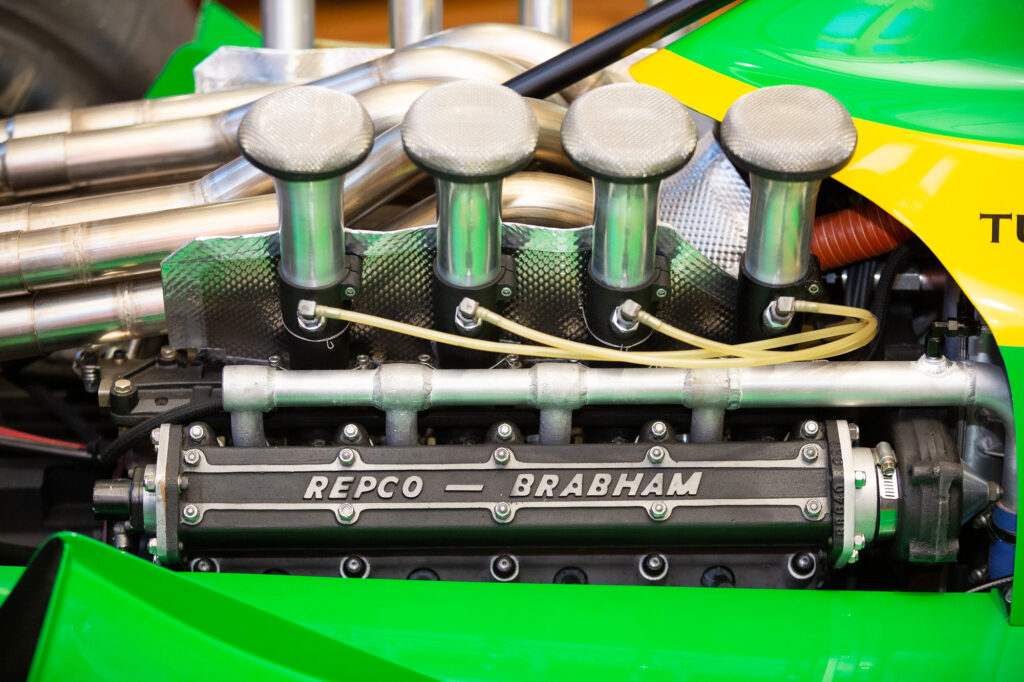
Homegrown Hero
From 1968 through ‘71, Garrie Cooper produced the Elfin 600, a spaceframe chassis that was ultimately adaptable to a wide range of classes, from Formula Ford, through F2, F3 and the ANF1 Tasman 2.5 litre class.
The example displayed at Motorclassica was Cooper’s personal weapon of choice for use in the Tasman and Gold Star series of the day.
Combining legendary Australian engineering prowess, this was the only Elfin to be fitted with the 2.5 litre Repco Brabham engine, and one of only four Repco-powered Australian-built open wheelers.
With the engine a stressed member of the chassis, a major weight-saving exercise, the light but stiff spaceframe provided outstanding handling, while also allowing for ease of serviceability.
From the first Elfin 600, which Cooper used to win the 1968 Singapore Grand Prix, the model evolved slightly, with further success following, such as with Larry Perkins’ National Formula Ford Series win in 1970, plus the Malaysian Grand Prix in 1968 and ‘69 with drivers Hengkie Irawan and Tony Maw.
In Tasman Series competition, the car sprouted some outrageous wings, which were the style at the time as constructors dabbled in the black art of aerodynamics.
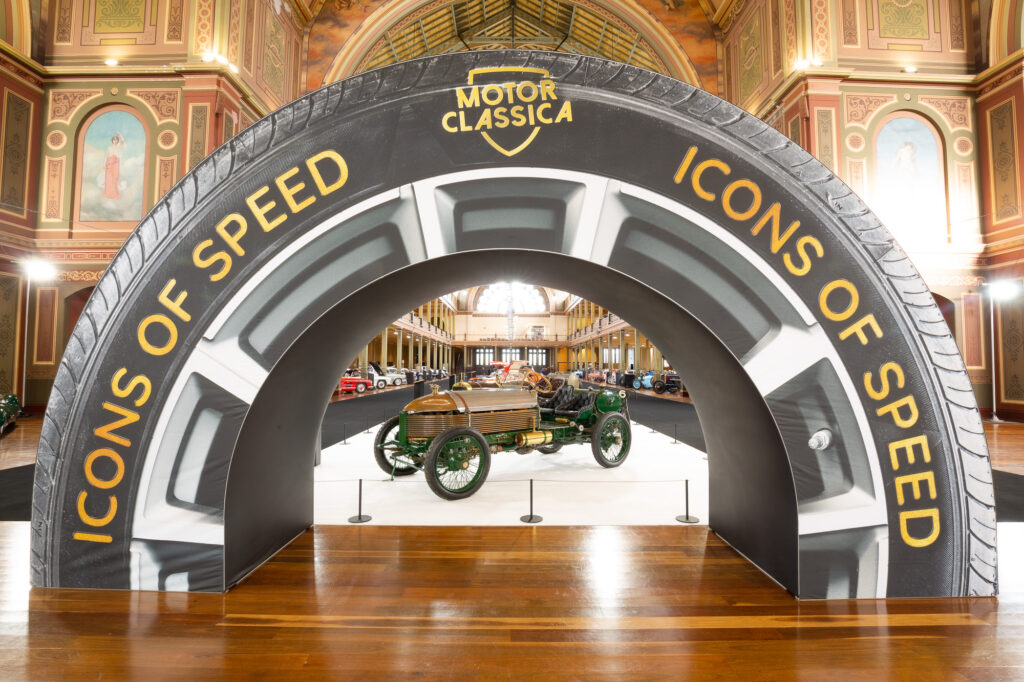
Daytona to Brooklands
The 1904 Napier L48 Samson embodies everything great about the heroic early days of motorsport, with massive power mated to a lightweight chassis, with the car’s stunning lines continuing to draw an audience some 114 years after they were first devised.
For this classic re-creation, Bob Chamberlain (of Chamberlain Tractors fame) utilised the original 15-litre 6-cylinder engine of the Napier, which set the Flying One Mile World Record of 104.65 mph at Ormond Beach, Florida in 1904.
That original article was then used by the British Team in the 1905 Gordon Bennett Cup, where it finished ninth as driven by Clifford Earp, completing the four laps of the 137km Auvergne Circuit in France in a time of 8hrs and 27min.
From Daytona Beach to Brooklands, the car was well-used in the major meets of the day.
Featuring 74 metres of copper tubing wrapped around the copper and aluminium dome, the car has an unmistakable presence.
It returned to life in 1982, making its public debut at that year’s Castrol 400 touring car meet at Sandown Raceway, which was followed by a start in the Geelong Sprints.
In more recent times, the Napier L48 has been a fixture in Western Australia’s York Motor Museum.
KB’s Pantera Returns
When legends meet, you get the DeTomaso Pantera that re-emgered into the public view at Motorclassica.
Motorsport fans from the mid-1980s will remember Kevin Bartlett, a winner of the Bathurst 1000 and multiple Australian Drivers’ Championships, behind the wheel of this awesome Pantera, decimating fields across the country, winning every race and always starting from pole position.
As an example of its dominance, in its final ever outing at Winton Motor Raceway, in a combined GT and Sportscar field, KB blasted into the distance, ultimately claiming victory by over a lap.
With ground effects machinery banned from 1986 onwards, the car was retired and spent 30 years stored in a container, however, it is now approved to run in Historic Group U Sports Sedans in full ground effects trim.
The Pantera, Italian for panther, was DeTomaso’s most popular model, with over 7,000 of the sleek sportscars manufactured over its 20-year production run.
The car was designed by the Italian design firm Ghia and the legendary American automotive artist Tom Tjaarda, who had a hand in crafting classics for Ferrari, Aston Martin and Mercedes-Benz.
Replacing the Mangusta, the Pantera was the last car produced in the Ghia and Vignale factories before Ford closed them down.
With 612bhp pumped out of the Ford V8 and only tipping the scales at 950kg in racing trim, the DeTomaso Pantera would still be competitive against anything that is up for a challenge.
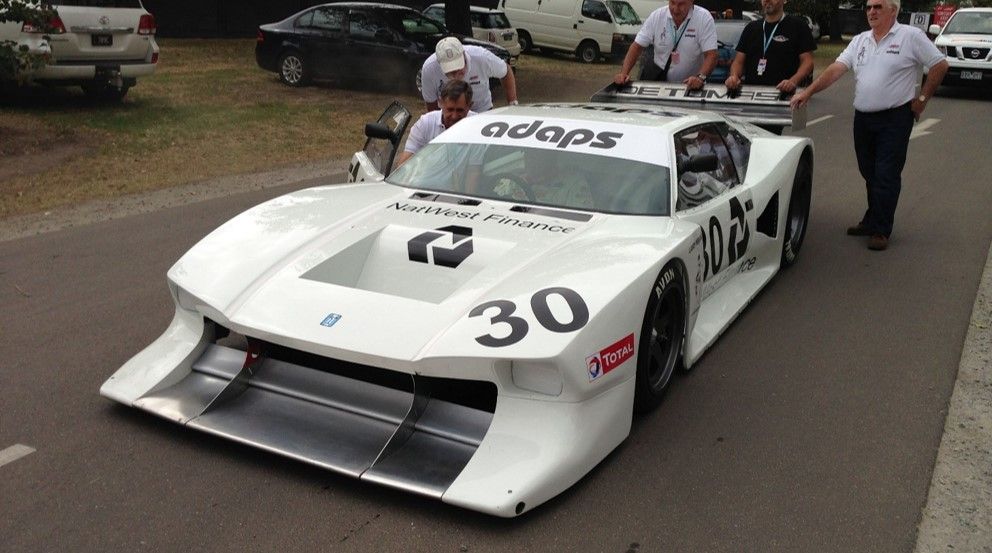
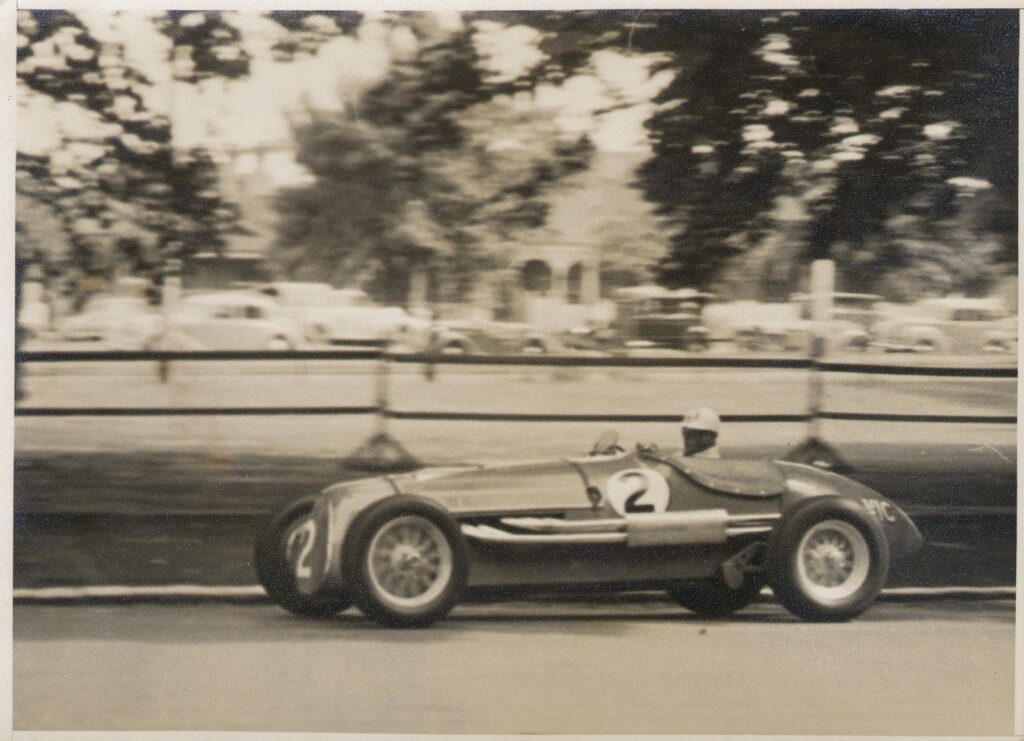
Image: State Library of Victoria
The Aussie Maybach
Before World War II, German automotive engineering had developed a stout reputation in competition circles.
On these shores, a Maybach inline 6-cylinder engine from a scout car wound up in the hands of Repco engineer Charlie Dean.
With the powerplant tuned up for competition use with the fitment of a large Roots-Type Supercharger, it was mated to a steel ladder frame, and wrapped in a sleek Grand Prix-styled body.
Specified with upper wishbones, lower transverse semi-elliptic leaf spring, and an anti-roll bar on the front, plus alive axle, trailing arms, and quarter-elliptic leaf springs out back, it was a neat handling package.
The Mayback Mk 1 was entrusted to Stan Jones, the father of future F1 World Driver’s Champion Alan Jones, with success coming in its stride.
Against the might of the latest international grade machinery, Jones held his own, and in 1954 claimed the Maybach’s crowning glory, victory in New Zealand’s first International Grand Prix, which was contested over 320km at the Ardmore Circuit near Auckland, heading home Ferraris, Coopers and BRMs.
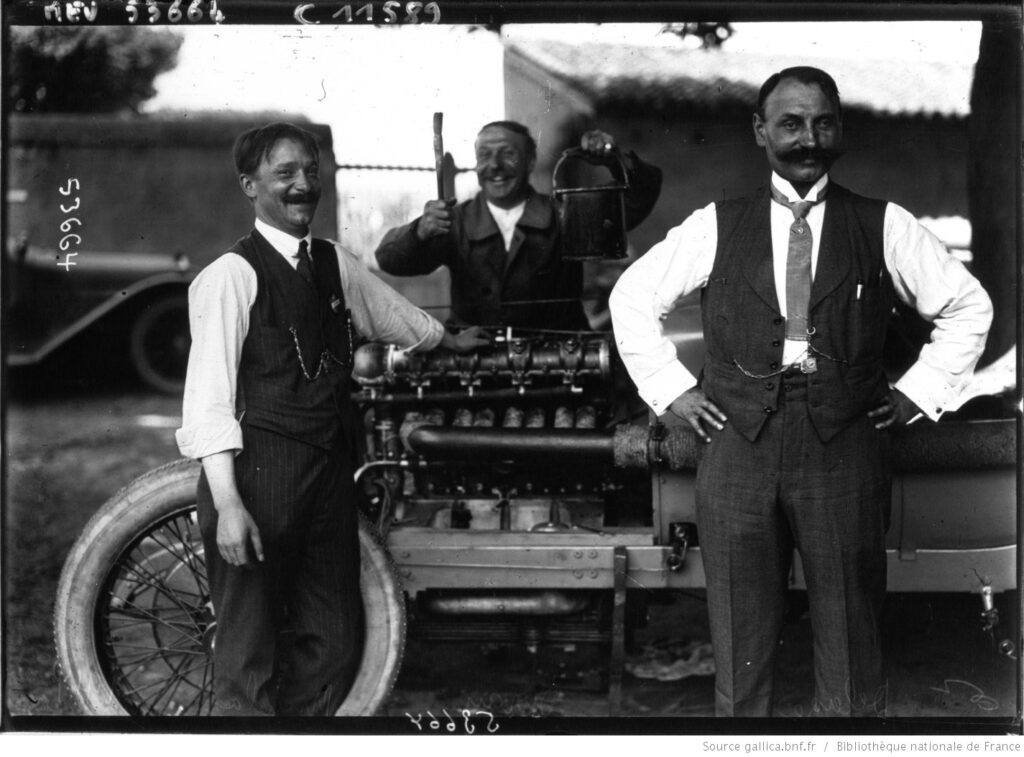
A True Survivor
One of four cars produced by the factory, the 1914 Delage Type S Grand Prix Racing displayed at Motorclassica is the only known survivor of the version to still exist.
The Delage features a 4.5-litre four-cylinder motor, that produced 113bhp at 2,800rpm, with the total package weighing only 1,100kg.
Mechanically, it was a very advanced design for its time, including twin cams and desmodromic valves, a five-speed gearbox, four-wheel brakes (via both hand and foot controls), and dual oil pumps, which effectively created a dry sump system.
From the famed 1914 French Grand Prix at Lyon, the cars were placed in storage during The Great War, before being sold to the USA, and used extensively, including in the Indianapolis 500.
The cars once again went into storage when America entered the War, with one of the vehicles then brought to Australia in 1925.
The car raced at our first dedicated racetrack in the Melbourne bayside suburb of Aspendale, and also at Maroubra Speedway in Sydney, where it won two races at the inaugural Olympia Speedway event.
After being converted to a road car, it was campaigned at Rob Roy with Ken Hume at its helm, with Lex Davison acquiring it shortly after.
Stuart Murdoch purchased the car in 1975, it was restored in 1978, and made an appearance at the Mount Tarrengower Hillclimb the same year.
More recently, a fault in the original cylinder block was rectified with a new block being created through advanced 3D modelling techniques.
Hidden from War
As far as fascinating cars at Motorclassica go, the 1934 MG K3 had one of the most incredible tales.
Purebred for competition, the K3 features a 1,086cc in-line six-cylinder engine, featuring a single overhead camshaft and a Roots-type supercharger, which produced better than 120bhp at 6,500rpm.
With a Wilson pre-selector four-speed transmission, and tipping the scales at slightly more than 900kg, simple mathematics dictates that this was a very competitive proposition.
And it was accessible too – for ₤695, the car could be ordered directly from the MG catalogue, a rarity for a full-spec racer.
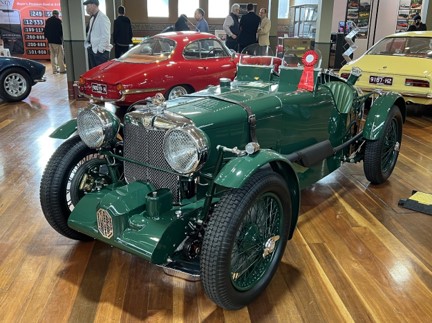
The car on show at Motorclassica was the ultimate of the breed, the final of the 30 K3s produced, number 3031, which sold in September 1934 to gentleman racer Eddy Hertzberger and exported to Holland.
Its campaign in 1935 included the famed Circuit de la Sarthe, with it subsequently utilised extensively up until World War II.
To keep the car safe during the War, it was hidden by being bricked in at the Amsterdam Olympic Stadium.
In 1946 the car was driven by Hans Herkuleyns with Lt-Col Goldie Gardner in the record-breaking MG EX135 runs which took place on Belgian motorways at Ostend.
The car ultimately made its way to Australia in the 1980s.



